When I was young, my mother dreamed of a cottage garden. She planted a trellised rose by the side of the house, and envisioned light purple clematis blooms intertwining with hot pink rose petals. Each year, she would sip her morning coffee and count the clematis buds, eagerly anticipating their beautiful blooms. And every year, they would suddenly disappear.
After several years of this, she looked in the trash—and discovered her precious clematis vines, wilted and uprooted. When asked about it, my father said he’d been fighting “that weed in the rosebush” for years!
Many years later, I too, sipped my coffee and eagerly anticipated the clematis blooming with the roses, then watched, horrified, as a well-intentioned landscaper looked at the clematis vines, thought a minute, then destroyed them with his weedwhacker.
Luckily, this little vine is a hardy grower, but not invasive where I live. My clematis vine—and my mother’s—bounced back quickly, once our garden helpers were informed that they were not, in fact, weeds. It’s still a bit early for clematis blooms where I live, but it’s never too early to cast on Deborah Newton’s Clematis Yoke Pullover. Knit in soft Manos del Uruguay wool, its bright and cheery blooms will last year-round.
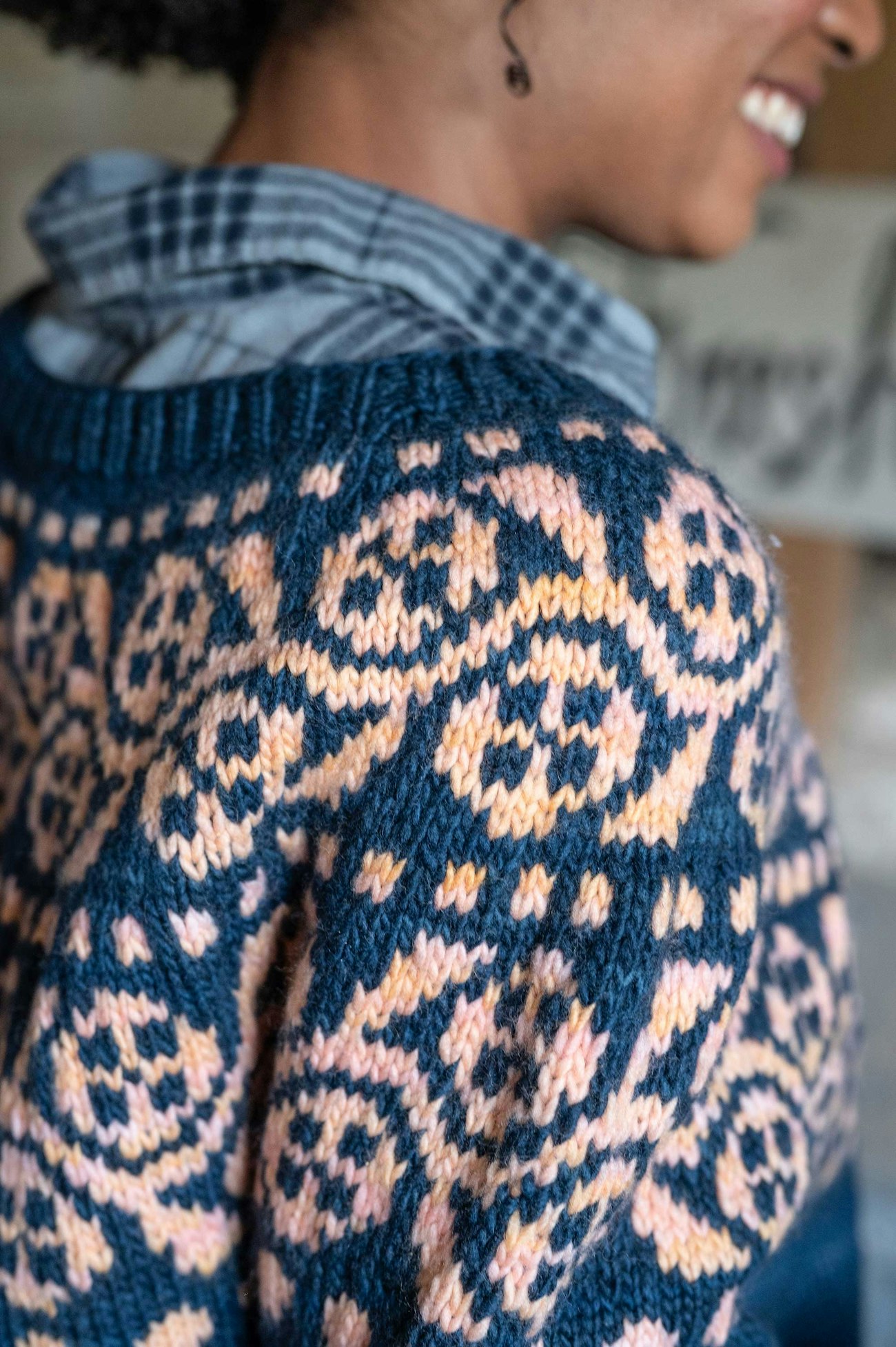 This version of the Clematis Yoke Pullover is knit with Manos del Uruguay Maxima. The main color is Galaxy Blue and the contrasting color is Apricot.
This version of the Clematis Yoke Pullover is knit with Manos del Uruguay Maxima. The main color is Galaxy Blue and the contrasting color is Apricot.
Selecting a Yarn
The Clematis Yoke Pullover calls for Manos del Uruguay Maxima, a single-ply worsted weight Merino yarn. Buttery and soft, this is a blissfully cozy yarn.
I’ve also had my eye on a new yarn line from Manos del Uruguay, Ideal. Named after the Uruguayan term for Polwarth sheep, this 100% Polwarth yarn is delightfully soft and bouncy, qualities often associated with the breed. Ideal’s four plies give it durability and good stitch definition in stranded colorwork.
Choosing Colors
Daunted by all the choices available from Fairmount Fibers, I chose two colors in each yarn line to make my swatches. In the Maxima yarn line, I chose the colors Meltaway Mints and Teal. In the Ideal yarn line, I chose Love Potion and Fjord.
As I picked out the colors for my swatches, I kept in mind some advice from Jenny Monteleone, a knitwear designer and yarn shop owner. She believes that contrast is key to making colorwork pop, and simplifies value ranges into light, medium, and dark. You can learn more about choosing color successfully in the upcoming video series A Twist on Color, coming soon!
Get a closer look! Click on any image below to open it in full-screen mode.
The First Swatch
Usually I choose solid colors when working stranded colorwork, but I wanted to see what happened when a variegated color like Meltaway Mints combined with a solid or semi-solid color. With its pale yellows, greens, and pinks, Meltaway Mints reminded me of dappled light falling on flower petals, and I wanted to see if that effect could translate into knitting.
As I knit my first swatch, it became clear that some of the lavender color runs in Meltaway Mints weren’t as light as I’d hoped, and didn’t have enough value contrast with the Teal colorway for my taste. This pairing could still make a compelling and interesting yoke, but it would be a good idea to make a larger swatch in the round just to make sure.
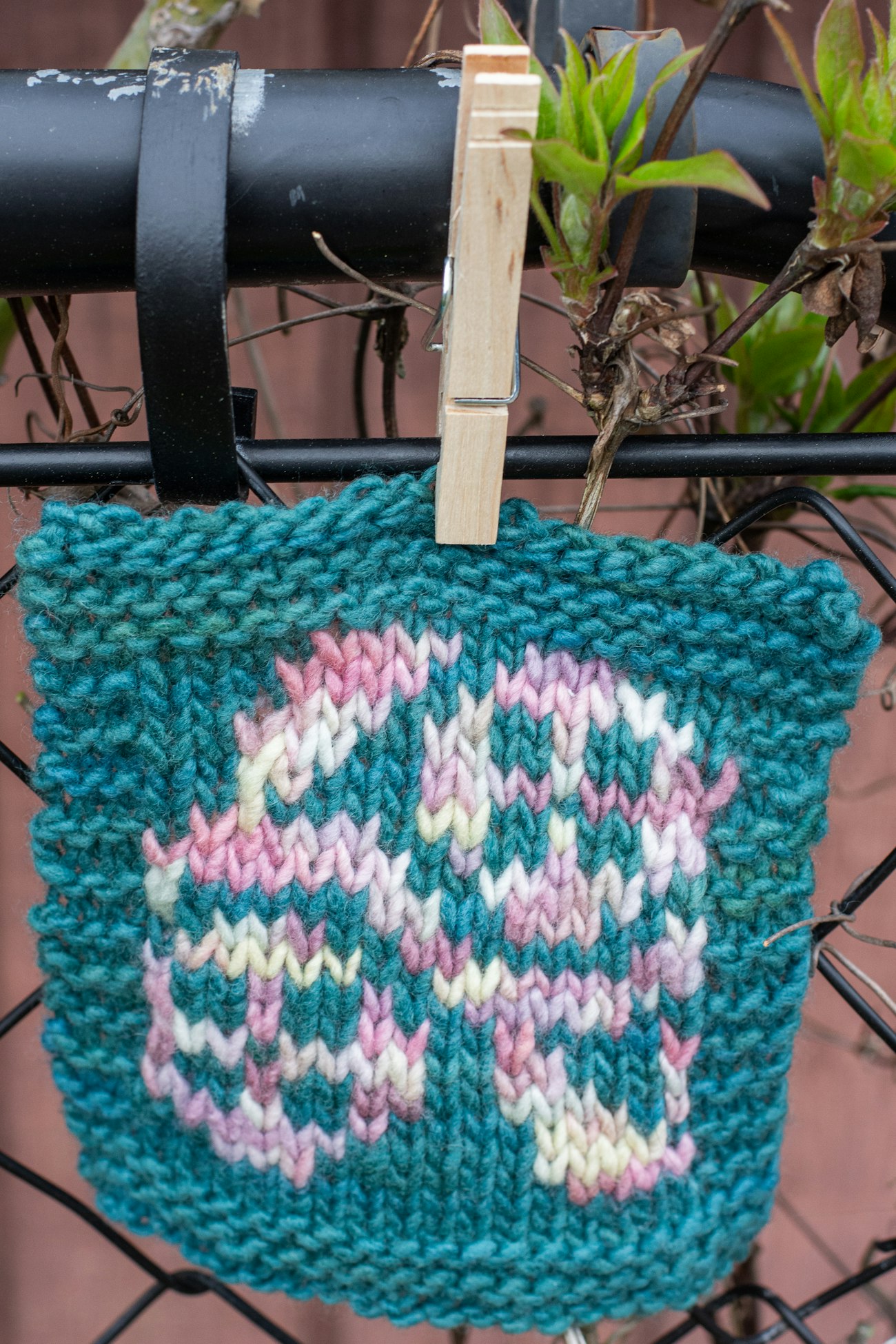 Pamela's first swatch. You can see the clematis leaves beginning to emerge in early spring. Photo by Pamela K. Schultz
Pamela's first swatch. You can see the clematis leaves beginning to emerge in early spring. Photo by Pamela K. Schultz
The Second Swatch
There were still plenty of options to try. Combining Meltaway Mints with Fjord in the Ideal yarn line created better contrast and a more successful pairing. You might not immediately think to combine a four-ply yarn and a single-ply yarn in colorwork, but a plied yarn in the body of the sweater will give it better durability, and the contrast in ply structure can also create an interesting contrast in surface texture in the colorwork section.
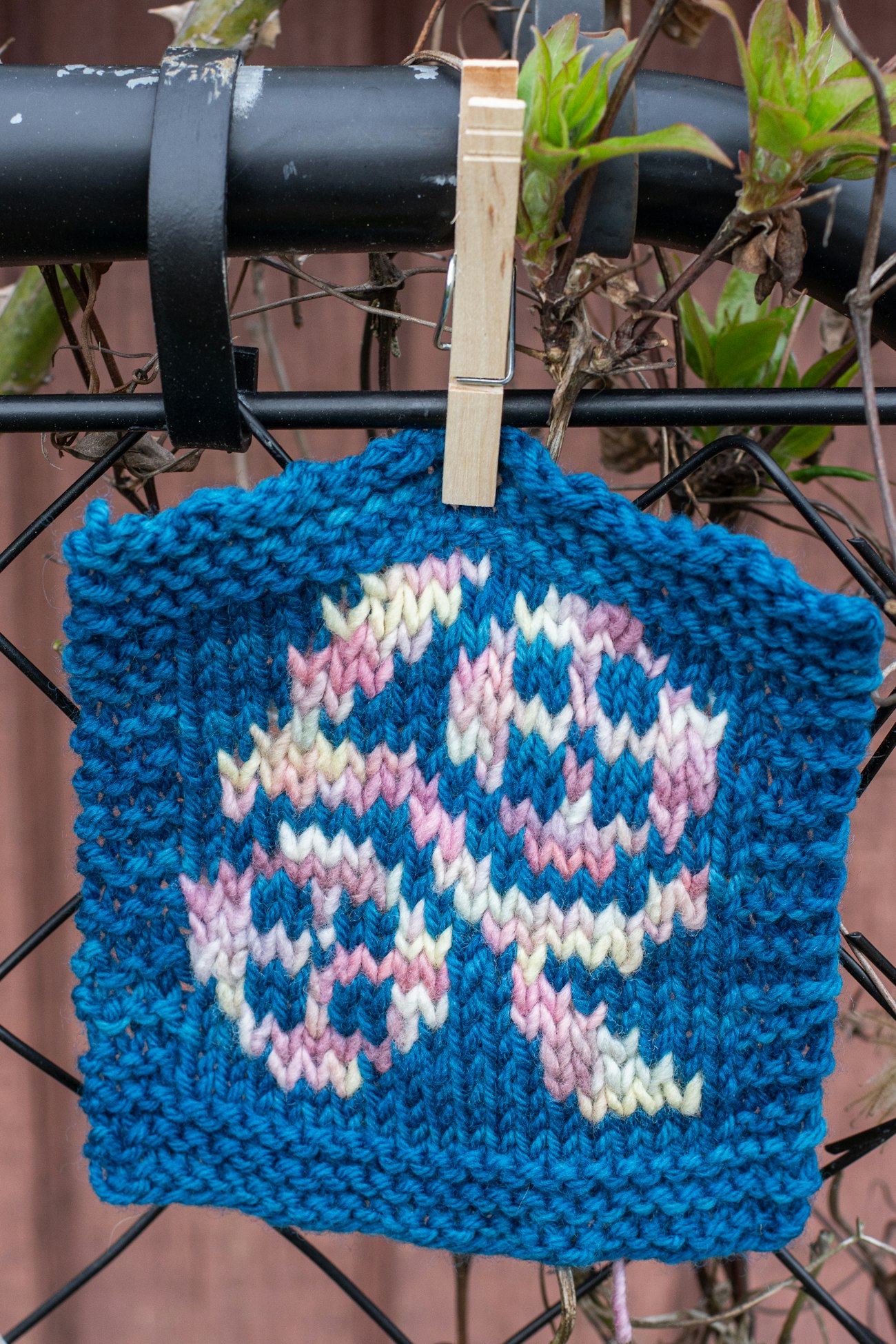 The second swatch has better value contrast between the main and contrasting colors. Photo by Pamela K. Schultz
The second swatch has better value contrast between the main and contrasting colors. Photo by Pamela K. Schultz
The Third Swatch
The next swatch was Fjord and Love Potion—both the from the four-ply Ultima line—and this was my favorite color pairing of the bunch. Love Potion is a lovely orchid pink, with just a hint of purple, and has great contrast with the deep blue of Fjord. The fabric is soft, and the stitch pattern clear and bright against the deep blue background.
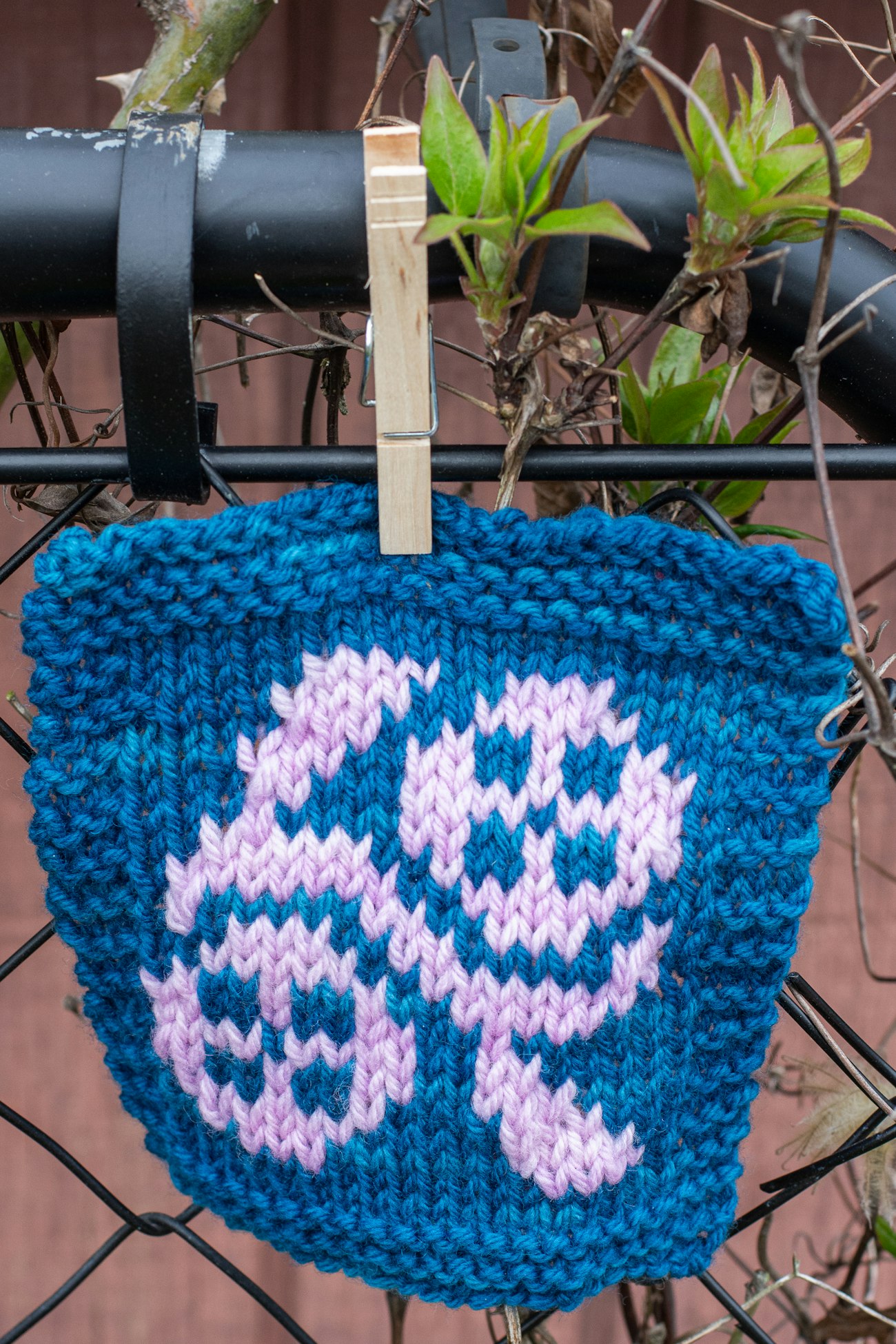 The third swatch has the best of both worlds, with good visual contrast and more durability from the four-ply yarns. Photo by Pamela K. Schultz
The third swatch has the best of both worlds, with good visual contrast and more durability from the four-ply yarns. Photo by Pamela K. Schultz
The Fourth Swatch
The last swatch I had planned was with the single-ply Maxima in Teal and four-ply Ideal in Love Potion. This is also a striking color combination, with a classic complementary color scheme. There’s great value contrast between the light orchid color of Love Potion and the medium-dark of Teal. Like the second swatch, there’s an interesting texture contrast between the plied and unplied yarns. However, I’d want to do a little stress testing before knitting the body of a sweater with a single-ply Merino—as soft as it is, it might not hold up to the way I treat my sweaters as all-purpose garments.
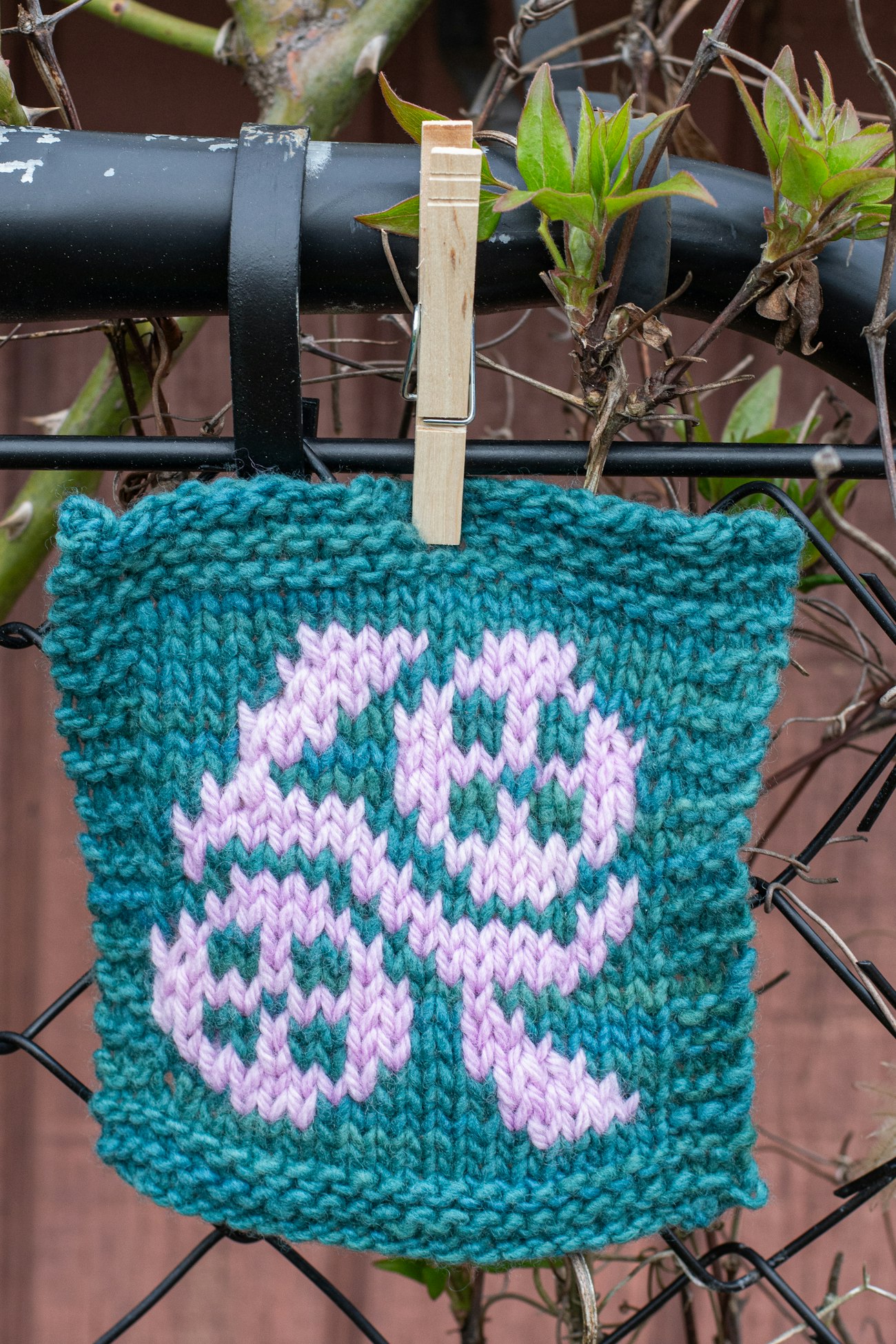 The fourth swatch has good value contrast between the colors. Photo by Pamela K. Schultz
The fourth swatch has good value contrast between the colors. Photo by Pamela K. Schultz
But Wait, There’s More!
There are still several color combinations I haven't tried with the yarns I have on hand. What would it look like with Love Potion as the main color and Teal or Fjord as the contrast color? I couldn't resist just one more swatch, with the dappled color of Meltaway Mints still on my mind. The last swatch is knit with Meltaway Mints in Maxima as the main color and Fjord in Ideal as the contrasting color. I think this could make a fun and modern sweater, too, though I’d like to try one more color—a deep indigo like Future Dusk in Ideal or a deep purple like Sea Urchin in Maxima.
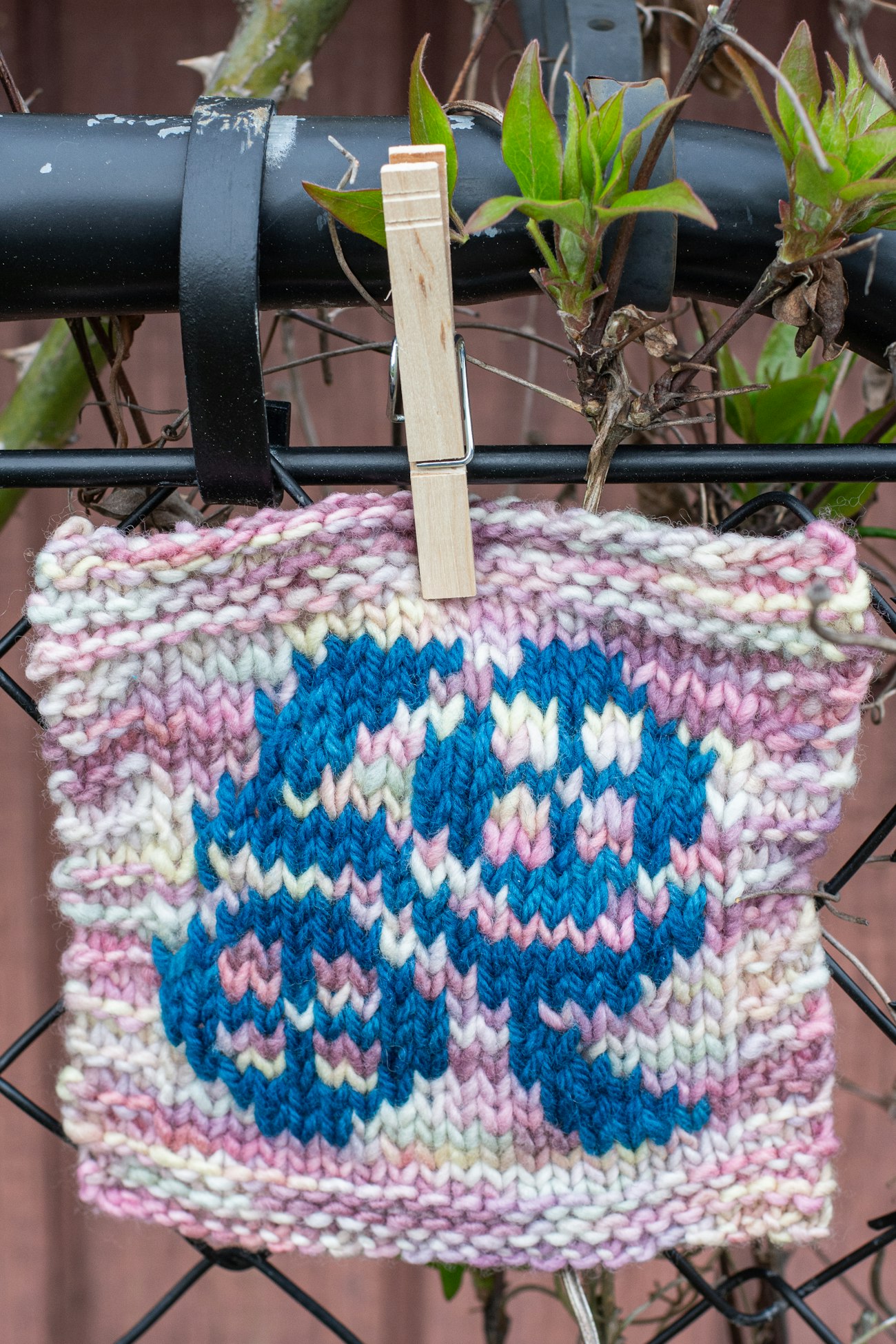 The fifth swatch is pure fun, with the variegated color as the main color. Photo by Pamela K. Schultz
The fifth swatch is pure fun, with the variegated color as the main color. Photo by Pamela K. Schultz
Swatching for Gauge and Color
You may notice that all these swatches are knit flat. The Clematis Yoke Pullover, however, is knit in the round, so I consider these swatches to be color previews, not gauge swatches!
Deborah Newton suggests starting with a sleeve as a good test of gauge, which is a strategy I can get behind. Remember to also check your guage in the round in the charted pattern—many knitters find they need a different needle size for stranded colorwork.
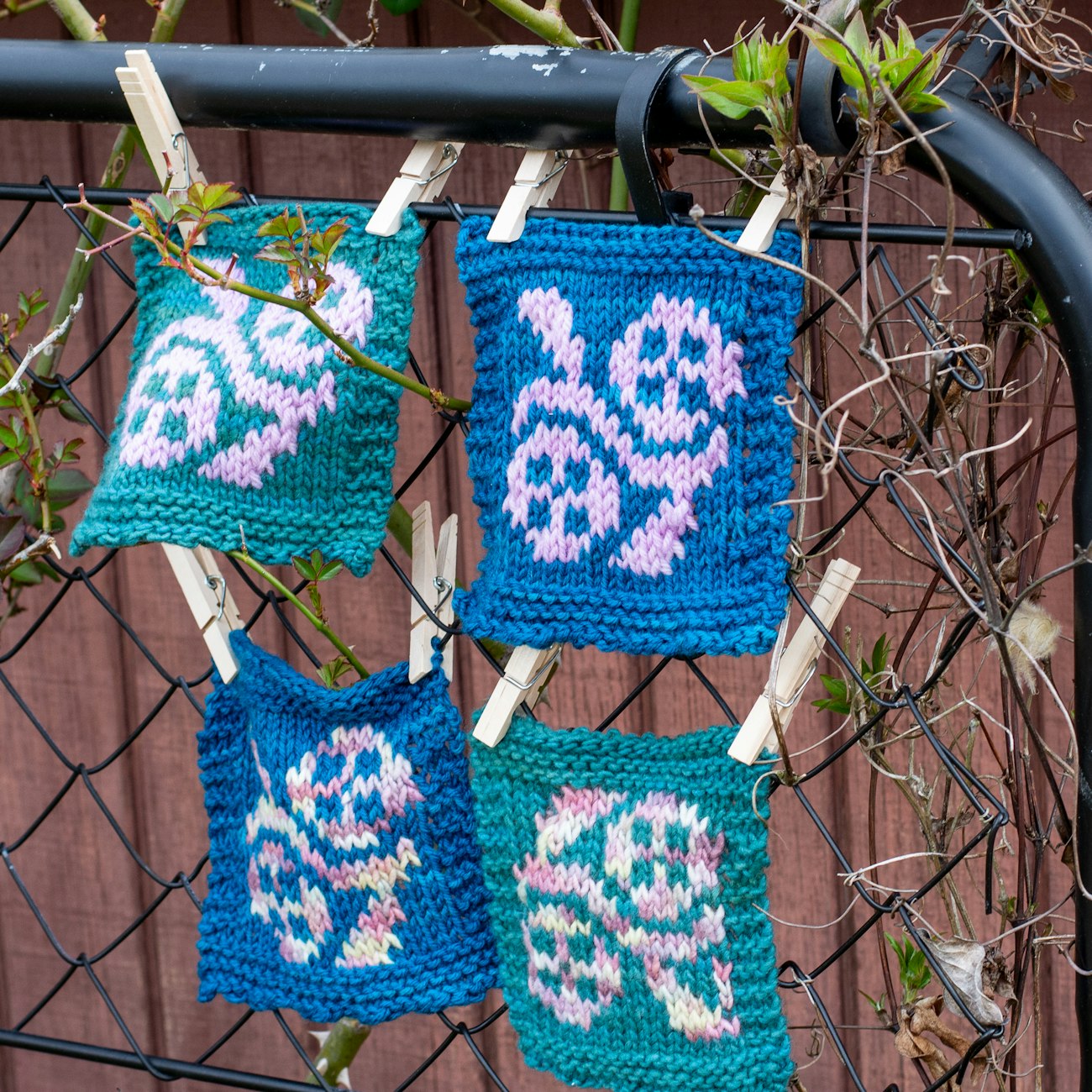 Blooming swatches anticipating spring. Photo by Pamela K. Schultz
Blooming swatches anticipating spring. Photo by Pamela K. Schultz
Ready to Cast On?
Whatever yarn or color combination you choose, the Clematis Yoke Pullover is a delightful addition to any handknitter’s wardrobe. It will have you enjoying bright, cheerful blooms, no matter the season—or the whims of your garden helpers!
 Cast on your Clematis Yoke Pullover today!
Cast on your Clematis Yoke Pullover today!





